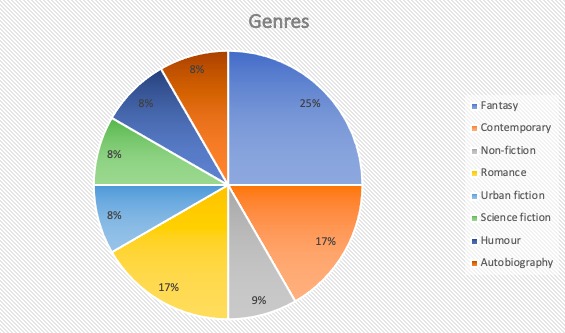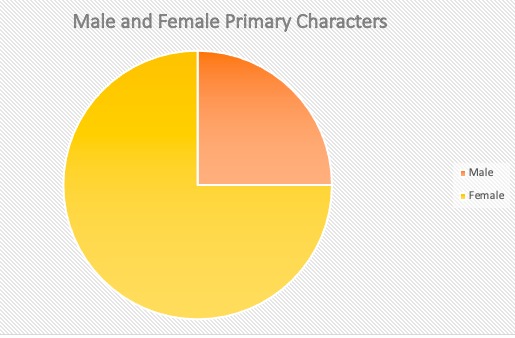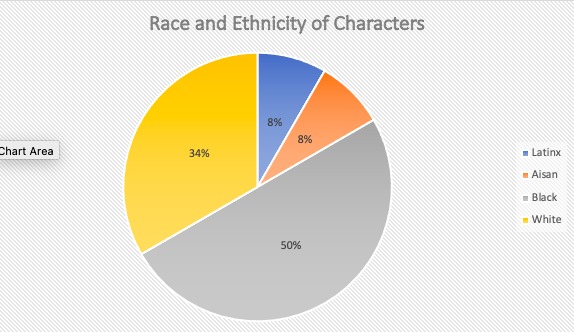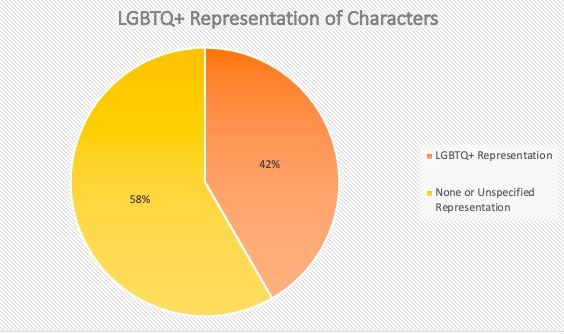What We Found
Genres
In our display, we calculated that 3 of the books were fantasy, 2 of them were romances, 2 were contemporary, and non-fiction, autobiography, humour, urban fiction, and science fiction had 1 respectively. This display exhibits great diversity between genres. There are many to choose from.
Character and Author Gender
Out of the 12 books we catalogued, 9 of them were written by women and 6 of those women, were women of color! This is worth getting excited about because a higher amount of female authors of a variety of ethnic backgrounds signifies that reader have a greater access to female perspectives combatting a number of issues. Also, 9 of the main characters featured in our catalogued Young Adult novels are female meaning, 75% of primary characters were women and 25% were men.
Why is this important?
Female characters that empower or provide something to relate to is impoartant in young adult novels because this particular demographic of readers are often exposed to ill-informed messages about women in the media. For women specifically, in order to spread positive messages about their sex, they should be portrayed in a way that YA women can see themselves achieving their goals and as strong people. The number of men and women primary characters also lines up with the sexes of the authors. This is important because the experiences of the primary characters are written from the point of view of the corresponding sex and taken into consideration.
Race and ethnicity of characters
There is a diverse representation of race and ethnicity in our chosen display. According to our findings, 50% of the novels had at least a black primary or secondary character, 34% had a white character, 8% had a latinx character, and 8% had an aisan character. It is encouraging seeing more black representation than white, as more charatcers in YA novels have different races and ethnicities.
Why is this important?
For YA readers, visibility is key. The more common it is for characters with a wide-range of races and ethnicities to not only appear, but to be one of the primary characters, the more YA readers will be able to connect with the characters and storyline.
LGBTQ+ representation of characters
As topics like sexuality get more attention and the discussion becomes more accepted, the more they will be inlcuded in YA novels. At this particular display, the representation is better than originally anticipated. The LGBTQ+ representation out of the 12 catalogued books is at 42%, with 58% either unspecified or is none. However, only 1 of the novels had an LGBTQ+ primary character. Recognizing that genre is important to consider, we would like to see more primary characters who are part of the LGBTQ+ community. This would place more importance on sexuality and does not leave the reader the impression that sexuality should be sidelined.
Why is this important?
It is important to start the discussion of sexuality early for YA audiences because it helps remove the shame, awkwardness, and taboo tendencies that Western society still associates with the LGBTQ+ community. Sexuality continues to more accepted so creating an open conversation allows YA readers a safe space to connect with characters and authors. Primary character representation will allow readers to feel accepted and understood because of the welcoming nature of the community.




